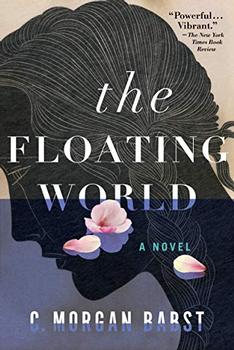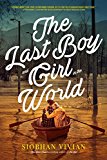Summary | Excerpt | Reading Guide | Reviews | Beyond the book | Read-Alikes | Genres & Themes | Author Bio

A Story of Katrina
by Rodman PhilbrickWhen 12-year-old Zane Dupree finds out that he has a long-lost great-grandmother living in New Orleans – and that his mom is sending him there from New Hampshire to visit – he's none too thrilled. He never even knew his dad; what's the point in meeting the old gumby who raised him? "Because you can't miss somebody you never knew, can you?" At least he's allowed to bring Bandy, his best friend and sidekick, and the best darn dog he could ever ask for. With Bandy tagging along, how bad could the trip possibly be?
So begins the story of Newbery Honor author Rodman Philbrick's Zane and the Hurricane, a highly descriptive and character-driven tale about Hurricane Katrina and her shocking aftermath. Though the book is a work of fiction, Philbrick tells readers that, "everything that happens to the characters in Zane and the Hurricane reflects real events and situations that affected real people in the days during and after Hurricane Katrina and the flooding of New Orleans." In some cases, it's almost unbelievable.
Philbrick introduces this disaster to young readers, who might otherwise be unfamiliar with the subject, through his unsuspecting narrator, Zane Dupree. "It is one small story, seen through one young man's eyes, and therefore limited to what he directly experienced. It is not the whole story of Katrina – not by a long shot," Philbrick explains. Zane has never been to New Orleans before, talks differently than those around him, and – with his caramel complexion and straight blond hair – stands out in his great-grandmother's predominantly black neighborhood. He is definitely an outsider, though the people around him make him feel welcome. Through his inexperienced eyes, readers get a humanized account of the stages of the storm, the flooding, and the surreal and seemingly impossible struggle to find safety.
The descriptions in the book are incredibly vivid and place the readers in the middle of the action. Words become visceral experiences, and you feel the horror of each new problem that Zane faces. In one example, after the peak of the storm has passed and Zane thinks the worst is over, he hears a strange noise that brings him out to the front porch. That's when he realizes that things are about to get much, much worse – and fast:
…[A] moment later there's a deep booming noise, like the sound when you thump the side of an empty fuel oil tank, only deeper. Deep enough to feel it rumble through your bones and in the bottom of your belly. …Next I hear a pop-pop-pop, like corks released from a row of bottles, and the fat, wet noise of rushing water. That's when I see it with my own eyes. A manhole cover pops into the air, releasing a geyser of brown water. Then another and another, right down the street, one, two, three, four. Torrents of water surge up from the ground, and more of it pours in from all sides, spilling around and under the houses, carrying debris along in the wake. Enough water to fill the world.
Rising sewage water, destroyed homes, stifling heat, tangles of cottonmouth snakes and swarms of cockroaches in the water, bloated floating bodies, the inescapable stench of death, mosquitoes everywhere, trigger-happy "security" teams, no water, no food, no electricity, and no real help on the way are all a part of Zane's story. (The narrator cautions readers from the very beginning, "I need to warn you right now, there's some really gross stuff in this book… stuff so awful it made a dog hide his nose, and believe me Bandy will sniff at most anything.") The descriptions are powerful and appeal to readers' senses, but they're not too much for young readers to handle.
The strongest and most interesting characters in the story are the two who rescue Zane from his flooded house. Trudell Manning, a calm, enduring, and paternal jazz musician, whose swollen ankle becomes more problematic as the story progresses, and his feisty, joke-cracking charge, Malvina Rawlins, whose mother leaves her for her off-again-on-again relationship with drugs and rehab. Both of them help educate Zane about New Orleans culture along the way, from jazz funeral processions, to food, to Creole influences, to difficult race relations. (In one very interesting scene, they float into a rich, white neighborhood that was hardly damaged by the flood and discover that helicopters are being used to "rescue" expensive rugs from mansions.) Tru and Malvina often speak in a New Orleans patois that simultaneously helps create the setting and, at times, could distract readers.
Zane, Tru and Malvina's struggles keep you on the edge of your seat, which makes for a very quick read, and it is easy to care about what happens to the three. I appreciate that Philbrick illustrates how some people automatically decide to collaborate with each other, while others seem controlled by fear and panic. In this way, his writing feels true and gives kids a taste for some of the deeper issues at hand, though they are never really discussed. While the ending felt a bit theatrical and unrealistic (and, without saying too much, I think the story's priorities came unglued), Zane and the Hurricane is an excellent introduction to the physical conditions left by Hurricane Katrina and peoples' struggle to survive. Recommended for readers, aged 10 – 14.
![]() This review was originally published in The BookBrowse Review in March 2014, and has been updated for the
September 2015 edition.
Click here to go to this issue.
This review was originally published in The BookBrowse Review in March 2014, and has been updated for the
September 2015 edition.
Click here to go to this issue.

If you liked Zane and the Hurricane, try these:

by C. Morgan Babst
Published 2018
A dazzling debut about family, home, and grief.

The Last Boy and Girl in the World
by Siobhan Vivian
Published 2017
From the critically acclaimed author of The List comes a stunning new novel about a girl who must say goodbye to everything she knows after a storm wreaks havoc on her hometown.
At times, our own light goes out, and is rekindled by a spark from another person.
Click Here to find out who said this, as well as discovering other famous literary quotes!
Your guide toexceptional books
BookBrowse seeks out and recommends the best in contemporary fiction and nonfiction—books that not only engage and entertain but also deepen our understanding of ourselves and the world around us.